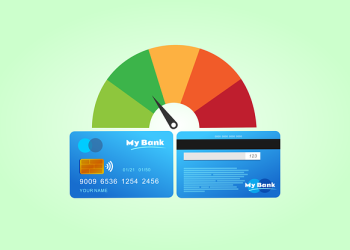Imagine walking through the front door of a dream home, the perfect space to build memories and establish roots. Envision the pride and satisfaction of homeownership, a significant milestone in one’s life journey. However, before this vision can become a reality, navigating the complex world of mortgages is imperative. Securing an affordable mortgage with favorable terms is crucial for making homeownership financially viable and sustainable over time.
This article aims to provide ten essential tips for obtaining the best mortgage rates possible. By delving into topics such as assessing credit scores, saving for down payments, researching loan types, comparing lenders and rates, locking in interest rates, preparing for pre-approval processes, negotiating with lenders, exploring government programs and monitoring market conditions – readers will be armed with critical knowledge to make informed decisions when pursuing their dream of homeownership. These tips aim to alleviate stress during the mortgage process while optimizing financial outcomes for prospective borrowers seeking competitive rates that align with their unique circumstances and needs.
Assessing Your Credit Score
A thorough assessment of one’s credit score, juxtaposed with the understanding of its impact on mortgage rates, is crucial for acquiring optimal financing options. Identifying and rectifying credit report errors in a timely manner can significantly enhance an individual’s creditworthiness, thus positively affecting the mortgage rates offered by lenders. Furthermore, debunking prevalent credit score myths and adopting strategic measures to build a strong credit history are essential steps toward achieving favorable mortgage terms. One such strategy includes maintaining a low credit utilization ratio by keeping balances on revolving accounts well below their respective limits, as this demonstrates responsible financial behavior and contributes to an improved credit profile. Ultimately, embracing these approaches ensures that borrowers are better positioned to secure competitive mortgage rates, facilitating their pursuit of homeownership under more advantageous financial conditions.
Saving for a Down Payment
Maximizing one’s down payment savings can significantly impact the mortgage rates offered, leading to long-term financial benefits. Implementing effective down payment strategies, such as setting realistic saving timelines and exploring various investment options, can enable prospective homeowners to accumulate a larger initial sum for their home purchase. In addition to these approaches, making budget adjustments in everyday expenses allows individuals to allocate more funds towards achieving their homeownership goals. By incorporating such methods, potential buyers not only increase their chances of securing favorable mortgage rates but also lay the foundation for enjoying the numerous advantages associated with owning property, including equity accumulation and tax deductions.
Researching Different Loan Types
Navigating the labyrinth of various loan types is a crucial step for prospective homeowners to ensure they secure the most suitable financing option, as each type presents its own unique benefits and drawbacks tailored to distinct financial situations. Loan eligibility, adjustable rates, fixed rate mortgages, balloon loans, and refinancing options all play a pivotal role in determining which mortgage package best aligns with an individual’s financial goals and capabilities. Adjustable-rate mortgages (ARMs) offer initial lower interest rates that may shift over time based on market fluctuations; fixed-rate mortgages provide consistent monthly payments throughout the entire loan term; balloon loans involve smaller payments initially followed by a large lump sum payment at the end of the term; and refinancing options enable homeowners to potentially acquire more favorable terms or consolidate debt. Thorough research into these divergent loan structures equips borrowers with invaluable knowledge needed to make informed decisions regarding their mortgage investments and ultimately achieve optimal mortgage rates.
Comparing Lenders and Rates
Thoroughly evaluating and contrasting various lenders and their respective rates is a fundamental aspect of the mortgage process, as it empowers borrowers to identify the most competitive and favorable financing options tailored to their unique financial needs. By assessing lender reputation through customer reviews and regulatory compliance records, individuals can ensure that they are aligning themselves with a trustworthy institution. Online comparisons serve as invaluable tools for efficiently analyzing the multitude of available loan products while considering factors such as interest rates, terms, fees, and other associated costs. Moreover, remaining cognizant of rate fluctuations due to market conditions enables borrowers to strategically time their applications in order to secure optimal mortgage rates. Exploring local banks may also yield benefits since these smaller institutions often offer highly personalized customer service and competitive rates in an effort to stimulate community growth. Additionally, partnering with experienced mortgage brokers who possess extensive knowledge of available loan programs from multiple lenders can further assist homebuyers in navigating this complex landscape toward the best possible outcome.
Locking in Your Interest Rate
Securing a favorable interest rate is a critical step in the mortgage process, as it can significantly impact the overall cost of homeownership and monthly payments. One way to ensure that a desirable rate is obtained is by locking in the interest rate, which involves committing to a specific rate for a predetermined period of time known as the rate lock duration. This duration varies among lenders but typically ranges from 30 to 60 days, with longer durations being available at an additional cost. It is essential to understand the lock expiration consequences, as failing to close within this timeframe may result in financial penalties or losing the previously agreed-upon interest rate. Conversely, floating-rate risks involve not locking in an interest rate and potentially facing higher rates when closing on the mortgage if market conditions change unfavorably. Homebuyers should also consider lock extension options if they believe their closing might be delayed beyond the initial lock duration; however, these extensions usually come with fees. Lastly, while uncommon, some lenders may offer rate renegotiation possibilities under specific circumstances such as significant changes in market conditions or if competing lenders provide more attractive rates during the lock-in period; nevertheless, this option should not be relied upon without thorough research and negotiation with one’s chosen lender.
Considering Points and Fees
Transitioning from the discussion on locking in interest rates, it is crucial to consider points and fees as an essential aspect of securing the best mortgage rates. A well-structured points strategy can significantly impact the overall cost of a mortgage. Borrowers must thoroughly analyze the fee breakdown, including origination fees, closing costs, and other charges associated with obtaining a loan. Closing costs typically consist of various expenses such as appraisal fees, title insurance, and recording fees. When evaluating different loan options, comparing points vs. rate can be helpful in determining which offers the most significant savings over time. This comparison involves weighing lower interest rates against higher up-front costs or vice versa. Additionally, understanding origination fees – charged by lenders for processing and underwriting loans – enables borrowers to negotiate better terms and make informed decisions in their quest for optimal mortgage rates.
Preparing for Pre-Approval
Navigating the labyrinthine process of pre-approval demands meticulous preparation and astute financial acumen to ensure a favorable outcome in the quest for an advantageous mortgage rate. Pre-approval benefits borrowers by enabling them to understand their borrowing capacity, thereby allowing them to focus on properties within their price range and demonstrating to sellers that they are serious buyers. To facilitate this process, it is essential for prospective borrowers to organize all necessary documentation, including pay stubs, tax returns, bank statements, and investment account statements. Establishing a reasonable pre-approval timeline demonstrates the borrower’s commitment and provides ample time for addressing any issues that may arise during the underwriting process. Ensuring financial stability through prudent management of debt levels and maintaining a consistent employment history further strengthens a borrower’s application for pre-approval and ultimately results in securing an optimal mortgage rate.
Negotiating with Lenders
Mastering the art of negotiation with lenders is a crucial skill for borrowers seeking favorable mortgage terms, as it allows them to compare offers, leverage their creditworthiness, and potentially save thousands of dollars over the life of the loan. Effective lender communication is vital in presenting oneself as a well-informed borrower, which can result in more attractive offers from multiple lending institutions. Utilizing negotiation strategies such as rate shopping—requesting quotes from several different lenders—and being prepared to discuss flexible terms can empower borrowers to negotiate lower interest rates or more manageable repayment plans. Additionally, borrowers must be vigilant in reviewing loan agreements for hidden fees that could increase the overall cost of borrowing; recognizing and addressing these fees during negotiations can lead to substantial long-term savings. Overall, by adopting an informed and proactive approach when negotiating with lenders, borrowers can maximize their chances of securing the best possible mortgage rates and terms.
Exploring Government Programs
Delving into the realm of government programs can unveil a treasure trove of resources and opportunities for borrowers seeking more affordable and accessible mortgage options. Various federal assistance initiatives, such as VA loans, FHA programs, and USDA programs, offer tailored solutions to cater to the unique needs of specific borrower demographics. For instance, VA loans provide favorable terms for veterans and active-duty service members, while FHA programs aim to make homeownership more attainable for low-to-moderate-income families by offering lower down payment requirements and more flexible underwriting guidelines. On the other hand, USDA programs target homebuyers in rural areas with income restrictions by providing 100% financing options at competitive rates. First-time buyers can also benefit from these offerings since many government-backed loans come with additional incentives like reduced closing costs or grants that can be applied towards down payments or home improvements. As such, exploring these various government-sponsored avenues can greatly contribute to securing optimal mortgage rates and making homeownership a reality for countless individuals across diverse financial backgrounds.
Monitoring Market Conditions
Closely observing market conditions is a crucial aspect of securing favorable mortgage terms, as it enables borrowers to make informed decisions based on current trends and fluctuations in interest rates. Market trends are shaped by various economic factors such as employment rates, inflation, and the overall health of the economy. Rate fluctuations can be influenced by changes in these economic indicators, as well as housing supply and demand dynamics. Additionally, global influences such as international trade policies or geopolitical events may impact mortgage rates indirectly through their effect on financial markets. By monitoring these factors and understanding how they interact with one another, borrowers can identify opportunities for obtaining lower mortgage rates and better loan terms while minimizing potential risks associated with unfavorable market shifts.
Conclusion
In conclusion, the pursuit of favorable mortgage rates is akin to navigating a labyrinth; careful planning and strategic decision-making are crucial. By assessing one’s credit score, saving for a down payment, researching loan types, comparing lenders and rates, locking in interest rates, preparing for pre-approval, negotiating with lenders, exploring government programs, and monitoring market conditions – optimal outcomes may be achieved.
Thus, prospective homeowners can secure the best mortgage rates available by diligently adhering to these essential tips. This comprehensive approach will not only facilitate a smoother home buying process but also pave the way towards long-term financial stability and success.






